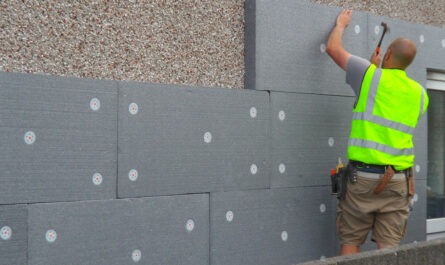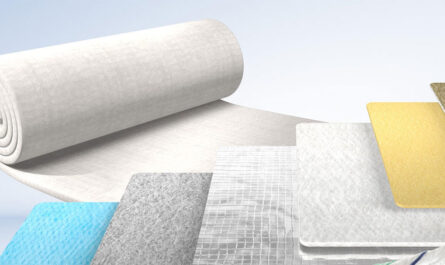Hydrophobic coatings, also known as water-repellent coatings, have gained immense popularity in the last decade for their ability to protect surfaces from water, moisture, and waterborne contaminants. With innovative advances in material science and nanotechnology, these smart coatings have become powerful tools for preventing corrosion, protecting electronic devices, self-cleaning surfaces, and more.
How do Hydrophobic Coatings Work?
At the nanoscale level, most hydrophobic coatings have similar characteristics – they are designed to reduce the attraction between water molecules and the treated surface. Through chemical modifications or surface texturing, these coatings lower the surface energy of materials, making it energetically favorable for water to bead up and roll off rather than wetting the surface.
Some key factors that determine the water-repellency of these surfaces include surface roughness, hydrophobic functional groups, and surface heterogeneity. Superhydrophobic coatings inspired by nature, like the self-cleaning lotus leaf, have complex micro- and nanostructures that trap air and minimize contact between water and solid surfaces. The entrapped air works like a cushion, allowing water to easily roll off.
The exact chemical composition and fabrication methods vary between different Hydrophobic Coatings. Common chemistries involve fluoropolymers, siloxanes, waxes, or polymers grafted with low-surface-energy moieties. Physical deposition techniques such as plasma spraying, sol-gel processing, and layer-by-layer assembly have enabled precise control over surface topographies down to the nanoscale.
Applications in Electronics and Devices
One major application of hydrophobic coatings is in consumer electronics to prevent water damage. Whether it’s rainfall, splashes, or accidental spills, these smart coatings provide durable liquid repellency on screens, casings, buttons, and ports. They have become virtually ubiquitous on devices like smartphones, tablets, cameras, and laptops.
Besides protection, they also offer self-cleaning abilities. The beading and rolling effect lifts away dust, dirt, and fingerprints for easier cleaning without using chemicals. Some coatings are even omniphobic, repelling not just water but oils and liquids too.
In industrial and medical electronics, hydrophobicity ensures functionality in wet and humid conditions. Devices like sensors, solar panels, LEDs, and surgical tools demand protection against moisture corrosion while maintaining transparency, conductivity and precision. New generations of coatings that self-heal from abrasion further future-proof electronic components.
Anti-fouling and Self-Cleaning
Another major driving force for hydrophobic coatings is their antifouling and self-cleaning properties. In marine applications, they prevent microorganisms, algae, slime, barnacles and other marine growth from adhering to boat hulls, ship fixtures, offshore structures and aquaculture nets. This reduces drag and biomass accumulation for improved energy efficiency and productivity.
Anti-fingerprint, self-cleaning abilities also see widespread architectural use on glass facades, indoor and outdoor fixtures. Simply wiping or rinsing removes accumulated dust, stains and debris without soap or scrubbing. Some formulations with photocatalysts can even break down and decompose organic residues under sunlight.
Beyond just ease of cleaning, such easy-to-maintain surfaces have hygienic benefits in healthcare, food processing and other sensitive environments too. Photoactive titanium dioxide in hydrophobic glasses is proving effective for disinfecting against microbes, viruses and allergens through photocatalytic oxidation.
Corrosion, Protection and Durability
By providing a physical barrier against water intrusion, hydrophobic coatings offer robust long-term protection against corrosion for metals, alloys, concrete and other porous structures. Infrastructure like bridges, tunnels, offshore oil rigs etc. that are routinely exposed to chloride-laden sea-spray, deicing salts or acidic environments rely on such protective treatments.
Even hyperhydrophobic coatings that self-repair minor abrasions through reconfiguration of the nanostructure ensure incredible durability and service lifetimes measured in decades rather than months or years. Coupled with indicators for easy inspection of coating integrity, they offer cost-effective, low-maintenance solutions to critical corrosion problems.
The Road Ahead
With advanced materials and nanofabrication capabilities, hydrophobic coatings continue to push the boundaries of liquid repellency and self-healing. Triple-slip interfaces that shed off water, oil and debris with minimal surface energy are being researched. Stimuli-responsive coatings tune their wetting properties in response to triggers like temperature, light or electric fields.
Multifunctional coatings integrate hydrophobicity with additional characteristics such as conductivity, flexibility, UV-resistance and more. Biomimetic designs take inspiration from nature at superomniphobic levels. As applications broaden, further innovations in coating durability, scalability and applicability across diverse substrates will be important.
Overall, hydrophobic coatings exemplify the huge potentials of interface engineering. Their widespread use for reliability and sustainability across industries highlights their precise manipulation of surface energy as an elegant solution to challenges related to water. Their future remains bright as new frontiers in materials science expand their abilities and unlock even greater possibilities.



